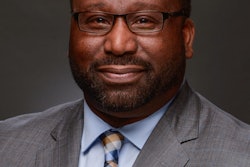After comparing local college tuition rates, New Jersey resident Shaheed Morris decided that Mercer County Community College (MCCC) was the most affordable choice. But Morris, who recently enrolled in an online communications course, says distance learning is not one-size-fits-all.
“The only benefit to taking an online class is that you have the opportunity to hand in an assignment at any hour of the day,” says Morris, 20. “But if you’re not good with time management, you could have a hard time with it.”
Morris and thousands of other students across the country are finding that the virtual classroom provides a flexible pathway to earning a degree, boosting credentials or transitioning between jobs. And in the midst of rising unemployment rates and a beleaguered economy, many of the nation’s distance-learning programs are experiencing unprecedented growth.
Officials at Excelsior College — which boasts being the country’s oldest distance-learning institution — say a considerable upward enrollment trend in recent months is partially because of current job market conditions.
“I think people are recognizing what is happening in their particular fields, and some are realizing that, as the job market gets tighter, those with credentials tend to fare better,” says William Stewart, assistant vice president for institutional advancement at Excelsior, who notes that overall online class enrollment this spring is at least 23 percent higher than last spring.
He adds that “for students enrolling in our degree programs in technology, we are about 43 percent above where we expected to be.”
Flexibility may be another reason for Excelsior’s steady enrollment boost. For example, military students — who compose about 25 percent of Excelsior’s student body of 32,000 — are allowed to apply certain military training toward degree requirements.
Nevertheless, some thought that a nationwide trend of tuition increases and recent company layoffs would mean that fewer students would return to the classroom this spring. But Shelley Dixon, director of outreach at the Center for Distance Learning at Empire State College in New York, says that many distance-learning programs appear to be immune to this issue.
“I haven’t seen any change in our traditional enrollment quite yet. Enrollment in the online classes has been steadily increasing in the last couple of years,” says Dixon.
She adds that a majority-adult student population of about 7,500 is enrolled in distance-learning courses at Empire, but says that it is difficult at this point to assess whether or not the state of the economy has played the only role in contributing to enrollment consistency.
“I think it is too soon to know how much of an impact the economy is having, (but) I think we’ll start to see more of an impact looking forward to the next fall,” Dixon says.
Some also suggest that registration in online programs at many of the country’s community colleges are on the upswing.
Dr. Jennifer Lerner, director of the Extended Learning Institute at Northern Virginia Community College (NOVA), says officials have added more course sections and additional instructors to help keep up with the increased demand for online learning.
“We are currently 10 percent larger than we were last spring,” says Lerner, adding that about 7,500 students are enrolled per semester in distance-learning programs at NOVA. “I definitely think that either the economy is a significant part of the cause for that growth or it is the result of people losing jobs or wanting to retain or bulk up on their skills so that they are prepared for opportunities that may arise.”
Deborah Kell, an assistant dean at MCCC, echoes these sentiments and adds that the college works to ensure that faculty members are consistently well trained in Internet-based communication tools so they can keep up with double digit enrollment growth.
“Our online enrollment has been increasing dramatically, but I’m not sure we can attribute it specifically to economic conditions,” says Kell, adding that the institution’s Virtual College current enrollment is nearly 26 percent higher than last year’s spring enrollment.
© Copyright 2005 by DiverseEducation.com


















